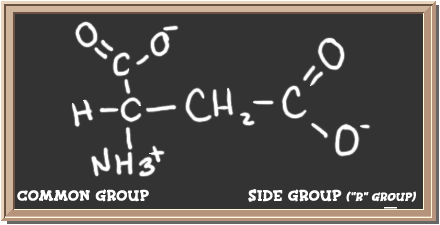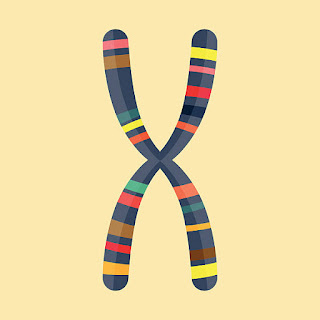Amino acids
Amino acids are a group of organic compounds containing two functional groups _ amino group and carboxyl .The amino group (-NH2 ) is basic while the carboxyl group (COOH) is acidic in nature.
STRUCTURE OF AMINO ACIDS
R-CH-COOH
l
NH2
1. Alanine – ala – A
2. Arginine – arg – R
3. Asparagine – asn – N
4. Aspartic acid – asp – D
5. Cysteine – cys – C
6. Glutamine – gln – Q
7. Glutamic acid – glu – E
8. Glycine – gly – G
9. Histidine – his – H
10. Isoleucine – ile – I
11. Leucine – leu – L
12. Lysine – lys – K
13. Methionine – met – M
14. Phenylalanine – phe – F
15. Proline – pro – P
16. Serine – ser – S
17. Threonine – thr – T
18. Tryptophan – trp – W
19. Tyrosine – tyr – Y
20. Valine – val – V
STANDARD AMINO ACIDS
As many as 300 amino acids occur in nature of these only 20 known as standard amino acids are repeatedly found in structure of protein . In 20 standard amino acids 10 are essential which are taken by diet and 10 are non essential which are made inside the body these amino acids are isolated from different forms of life animal , plant and microbial.
And all amino acids are present in body i L -configuration .
CLASSIFICATION OF PROTEIN
There are different ways of classifying the amino acids based on the structure and chemical nature,nutritional requrement ,metabolic fate etc but here we classify based on their structure.
A) AMINO ACIDS CLASSIFICATION BASED ON THE STRUCTURE
A comprehensive classification of amino acidsis based on their structure and chemical nature . Each amino acid is assigned a 3 letter or 1 letter symbol .The 20 amino acids found in protein structure.are divided into seven distinct groups
1)AMINO ACIDS WITH ALIPHATIC SIDE CHAINS
These are the monoamino monocarboxylic acids.This group consists of the most simple amino acids glycine, alanine,valine ,leucine,isoluicine.The last three amino acids(leu,lle,valine)contain branched chain amino acids hwnce they are reffered to asbranced chain amino acids.
2)HYDROXYL GROUP CONTAINING AMINO ACIDS
Serine ,threonine,and tyrosine are hydroxyl group containing amino acid tyrosine being aromatic in nature is usually considered under aromatic amino acids
3)SULPHUR CONTAINING AMINO ACIDS
Cysteine with sulphydryl group and methionine with thioester group are the two amino acids .
4)ACIDIC AMINO ACIDS AND THEIR AMIDES
Aspartic acid and glutamic acids are dicarboxylic monoamino acids while asparagine and glutamine are their respective amide derivatives .
5)BASIC AMINO ACIDS
The three amino acids lysine ,arginine (with guanidino group )and histidine (with imidazole ring) are dibasic mono carboxylic acid are highly basic in character.
6)AROMATIC AMINO ACIDS
Phenylalanine tyrosine and tryptophan (with indole ring) are aromatic amino acids .
7) Imino acids
Proline containing pyrrolidine ring is a.unique amino acids .it has an imino group (=NH),instead of an amino group (- NH2) found in other amino acids.therefore ,proline is an imino acid .
B) Classification of amino acids based on their polarity
Amino acids are classified into 4 groups based on their polarity . Polarity is important for protein structure.
1) NON POLAR AMINO ACIDS
These amino acids are hydrophobic (water hating). They have no charge on the 'R' group these included amino acids are alanine leucine ,isolucine,valine ,methionine,phenylalanine,trptophan and proline.
2)POLAR AMINO ACIDS WITH NO CHARGE ON R GROUP
These amino acids carry no charge on R group they posses the group sach hydroxyl sulphydryl and amide participate in hydrogen bonding in protein structure example .( glycine serine threonine cysteine glutamine asparagine and tyrosine
3) POLAR AMINO ACIDS WITH POSITIVE R GROUP
The three amino acids are lysine arginine and histidine
4) POLAR AMINO ACIDS WITH NEGATIVE R GROUP
The dicarboxylic mono aminoacids aspartuc acid and glutamic acids .























Comments
Post a Comment